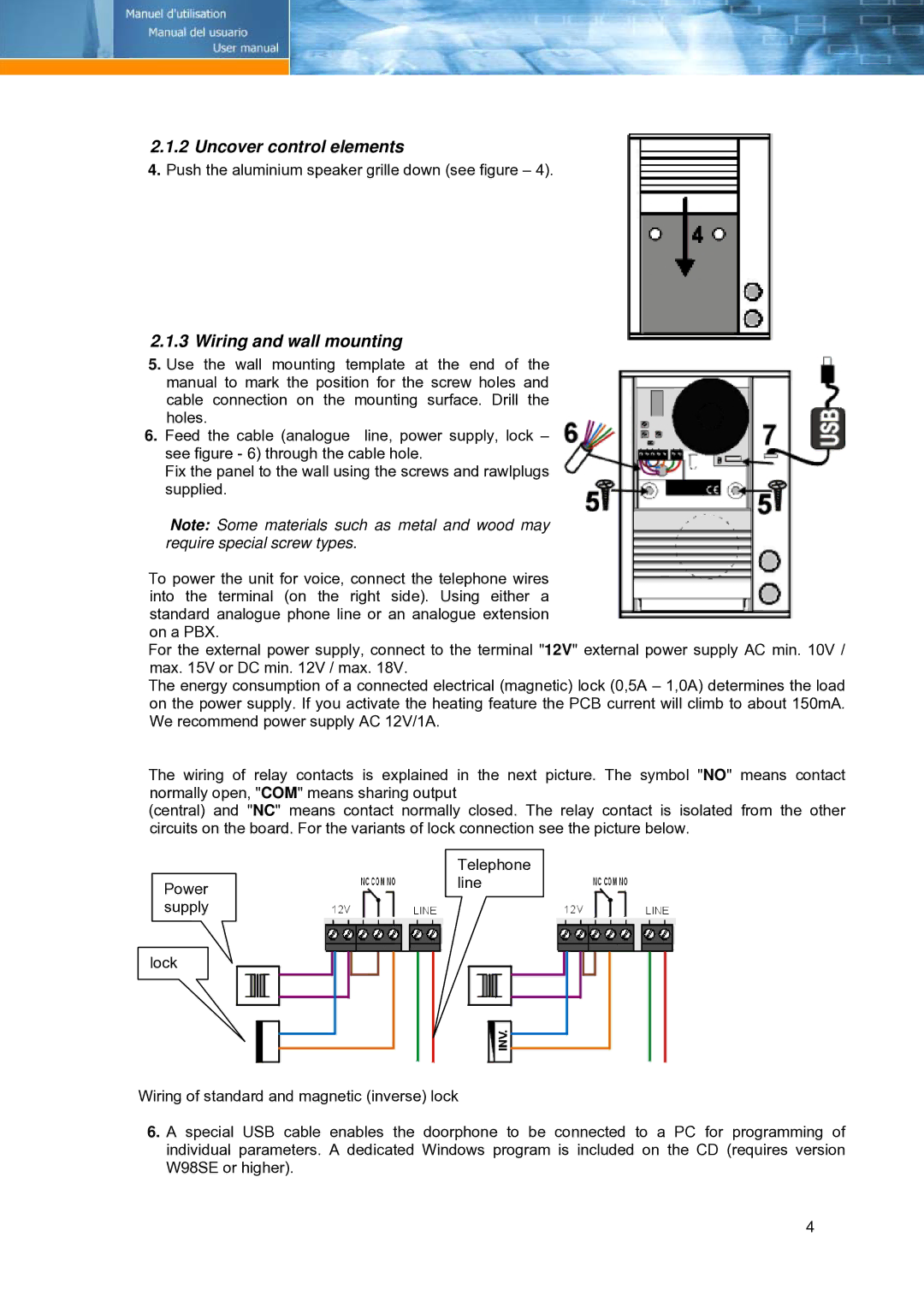
2.1.2Uncover control elements
4.Push the aluminium speaker grille down (see figure – 4).
2.1.3Wiring and wall mounting
5.Use the wall mounting template at the end of the manual to mark the position for the screw holes and cable connection on the mounting surface. Drill the holes.
6.Feed the cable (analogue line, power supply, lock – see figure - 6) through the cable hole.
Fix the panel to the wall using the screws and rawlplugs supplied.
Note: Some materials such as metal and wood may require special screw types.
To power the unit for voice, connect the telephone wires into the terminal (on the right side). Using either a standard analogue phone line or an analogue extension on a PBX.
For the external power supply, connect to the terminal "12V" external power supply AC min. 10V / max. 15V or DC min. 12V / max. 18V.
The energy consumption of a connected electrical (magnetic) lock (0,5A – 1,0A) determines the load on the power supply. If you activate the heating feature the PCB current will climb to about 150mA. We recommend power supply AC 12V/1A.
The wiring of relay contacts is explained in the next picture. The symbol "NO" means contact normally open, "COM" means sharing output
(central) and "NC" means contact normally closed. The relay contact is isolated from the other circuits on the board. For the variants of lock connection see the picture below.
Telephone
Powerline supply
lock
Wiring of standard and magnetic (inverse) lock
6.A special USB cable enables the doorphone to be connected to a PC for programming of individual parameters. A dedicated Windows program is included on the CD (requires version W98SE or higher).
4
